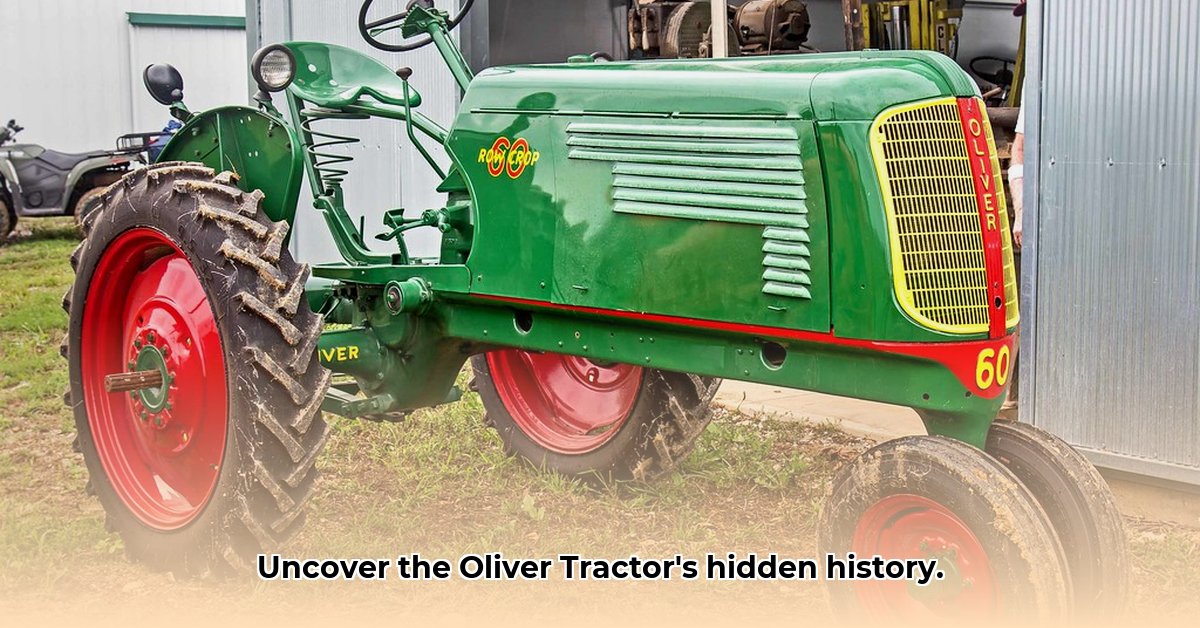
60 Oliver Tractor: A Legacy Forged in the Fields
The Oliver 60 tractor, a workhorse of the 1940s, significantly impacted American agriculture. Imagine the vast fields of the American Midwest; farmers, previously reliant on horses and arduous manual labor, began embracing mechanization. The Oliver 60, with its 20 horsepower engine, offered a pathway to increased productivity. Its compact size, ideal for row crops, particularly benefited smaller farms struggling with post-war labor shortages and increased food demands. This made it a crucial tool for countless family farms striving for economic survival. Did its impact truly revolutionize farming? Let's explore. For more information on related Oliver tractors, check out this parts diagram.
Power Under the Hood: Technical Specifications and Features
The Oliver 60 weighed approximately 2500 pounds and boasted an 85.5-inch wheelbase. It utilized a gasoline engine, a common choice for agricultural machinery of the era. While precise fuel consumption data remains elusive, its fuel efficiency likely paled in comparison to modern standards. A critical feature was its power take-off (PTO) shaft, enabling the operation of various implements such as plows and harvesters. The tractor's tire configuration—5.00-15 front and 9-32 rear—was likely optimized for traction and maneuverability in diverse field conditions.
Farming in the 1940s: A Time of Transition
The Oliver 60 emerged during a transformative period in American agriculture. The post-World War II era presented farmers with unique challenges: labor shortages, soaring food demands, and technological limitations. The Oliver 60 offered a practical solution, enhancing efficiency in plowing, planting, and harvesting. However, its impact was not a simple revolution. The limitations inherent in its design and the farming practices of the time need careful consideration.
The Oliver 60’s Impact: Assessing Efficiency and Sustainability
The Oliver 60 significantly increased productivity, but its 20 horsepower limited its scalability. It was best suited for smaller farms and specific crop types. Data regarding its long-term environmental impact—fuel efficiency and soil compaction—remains limited, hindering a complete assessment of its sustainability compared to modern standards or even earlier manual farming methods. Further research is needed to understand its full impact.
| Feature | Description | Implications |
|---|---|---|
| Horsepower | 20 hp | Sufficient for smaller farms, limited scalability |
| Weight | Approximately 2500 pounds | Maneuverability, suitability for specific crops |
| Fuel Type | Gasoline | Fuel efficiency likely lower than modern tractors |
| PTO | Included | Enabled use of various implements |
| Tire Sizes | 5.00-15 front, 9-32 rear | Optimized for soil conditions and farming practices |
A Living Legacy: Preservation and Ongoing Efforts
Today, the Oliver 60 serves as a significant artifact of agricultural history. Finding a functional example is a prized achievement for collectors and enthusiasts. Museums across the nation showcase these machines, highlighting their enduring historical importance. Active restoration projects ensure that this piece of history remains accessible to future generations. More than just machinery, these efforts preserve a vital chapter in American agricultural heritage.
The Oliver 60's Enduring Significance
The Oliver 60 holds a unique place in the narrative of agricultural mechanization. While not the most powerful or technologically advanced tractor of its era, its contribution to smaller farms during the mid-20th century was substantial. Its story underscores the evolution of farming and the constant pursuit of improved efficiency and sustainability. Its impact serves as a valuable case study for ongoing research and discussion. Its legacy continues to inspire exploration of the past and a deeper understanding of modern agricultural practices.
Three Pivotal Points:
- The Oliver 60 provided a significant boost in productivity for smaller farms during a period of post-war labor shortages and increased food demands.
- Its relatively low horsepower limited its scalability compared to later, more powerful tractors.
- Preservation efforts are crucial to maintaining its presence in museums and to ensuring its legacy continues to inspire future generations.